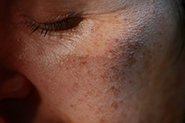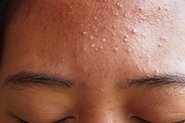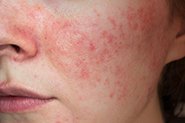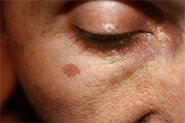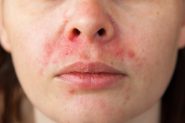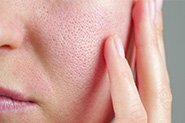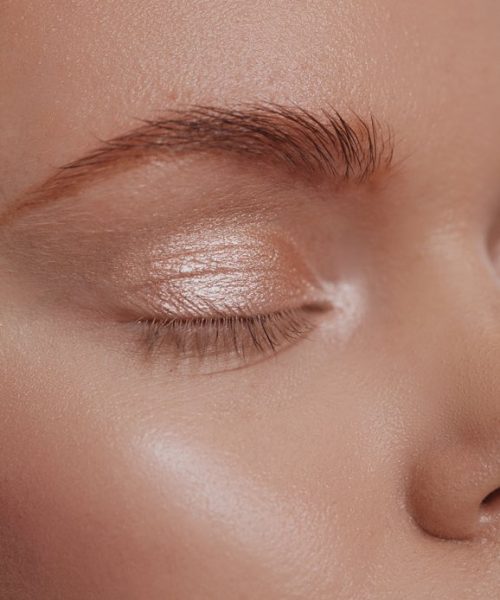
Well, do they?
It’s not a straightforward answer! If you mean do over the counter growth serums work, then generally not (at least in Australia – more about that later). The only clinically proven serum for eyelash growth worldwide is a prescription drug called bimatoprost. It is marketed internationally as ‘Latisse’ and only available on medical prescription.
There are a whole host of lash ‘enhancing’ or ‘conditioning’ serums on the cosmetic market containing peptides, oils, and moisturising agents. Some people even swear by applying pure castor oil to their lashes. These products do exactly as claimed – enhance the appearance of lashes. Much like hair conditioner, these products can reduce breakage, so lashes appear longer and fuller. There is no clinical evidence that they improve hair growth (irrespective of their price).
How does a prescription lash serum work?
Bimatoprost, when applied to skin at the base of lashes on the upper eyelid, binds to receptors on the hair follicle that normally bind a hormone called ‘prostaglandin’, known to increase eyelash hair growth (length and thickness) and darkness in multiple clinical studies. Precisely how it triggers growth is not known, but it is thought that bimatoprost stimulates lashes in their resting (telogen) phase to enter the active growth (anagen) phase, and stay in that phase for longer.
When medically prescribed to patients who have been carefully assessed, and applied to skin at the lash base, there are minimal side effects (<4% of patients). These side effects can include:
– Lid irritation (resolves after 1-2 weeks of continued use)
– Skin pigmentation changes close to the lashes where the product is applied (this is reversed when treatment is stopped)
– Decreased tear production/dry eyes
– Darkening of the iris (the coloured part of the eye) has been reported as an extremely rare side effect of bimatoprost, when used for glaucoma, and is not reversible. It has not been reported when used on the skin for lash growth.
Are there any other lash growth ingredients to look out for?
There are several other compounds in the cosmetic market that claim to mimic prostaglandin, with tongue-twisting names like:
-
Isopropyl cloprostenate
-
Isopropanol Phenyl-hydroxyl-pentene Dihydroxy-cyclopentyl-heptenate
-
Dechloro Dihydroxy Difluoro Ethylcloprostenolamide
-
Trifluoromethyl Dechloro Ethylprostenolamide
Anecdotally, these have some effect on lash growth, but bimatoprost is the only clinically-proven lash growth ingredient. All of these ingredients are banned from sale in cosmetics in Australia.
Does a prescription lash growth serum work on naturally short, sparse lashes?
In clinical studies, all lash types show significant improvement in length, thickness and darkness with bimatoprost. If you have eyelash loss from eyelash disease, bimatoprost results can be variable, and take much longer than for those with healthy lashes. Likewise, for those wishing to restore lashes after cancer treatment.
How long before I see results with a prescription lash serum?
Any time you are changing the actual function of skin or hair, results take time. In scientific studies, participants using bimatoprost showed initial improvement by 4 weeks of daily use, with continued improvement until 16 weeks. Click HERE to see before and after images of our lash serum.
What if I stop using it?
If you stop using bimatoprost, lashes return to their previous appearance over several weeks to months.
To chat with one of our doctors about whether a prescription lash serum is right for you, CLICK HERE.
REFERENCES
- Tosti A et al. Hypertrichosis of the eyelashes caused by bimatoprost. J Am Acad Dermatol. 2004. Nov;51(5 Suppl):S149-150.
- Johnstone MA, Albert DM. Prostaglandin-induced hair growth. Surv Ophthalmol. 2002. Aug;47 Suppl 1:S185-202.
- Smith S, Fagien S, Whitcup SM, Ledon F, Somogyi C, Weng E, et al. Eyelash growth in subjects treated with bimatoprost: a multicenter, randomized, double-masked, vehicle-controlled, parallel-group study. J Am Acad Dermatol. 2012 May;66(5):801–6.
- Vila TO, Camacho Martinez FM. Bimatoprost in the treatment of eyelash universalis alopecia areata. Int J Trichology. 2010 Jul;2(2):86–8.
- Morris CL, Stinnett S, Woodward J. The role of bimatoprost eyelash gel in chemotherapy-induced madarosis: an analysis of efficacy and safety. Int J Trichology. 2011 Jul;3(2):84–91.
- Kapur R, Osmanovic S, Toyran S, Edward DP. Bimatoprost-induced periocular skin hyperpigmentation: histopathological study. Arch Ophthalmol Chic Ill 1960. 2005 Nov;123(11):1541–6.
- Anbar TS, El-Ammawi TS, Barakat M, Fawzy A. Skin pigmentation after NB-UVB and three analogues of prostaglandin F(2alpha) in guinea pigs: a comparative study. J Eur Acad Dermatol Venereol JEADV. 2010 Jan;24(1):28–31.
WOULD YOU LIKE TO CHAT TO ONE OF OUR FRIENDLY DOCTORS ABOUT YOUR EYELASHES?
CLICK HERE TO BOOK A CONSULT WITH OUR EXPERIENCED MEDICAL TEAM.


